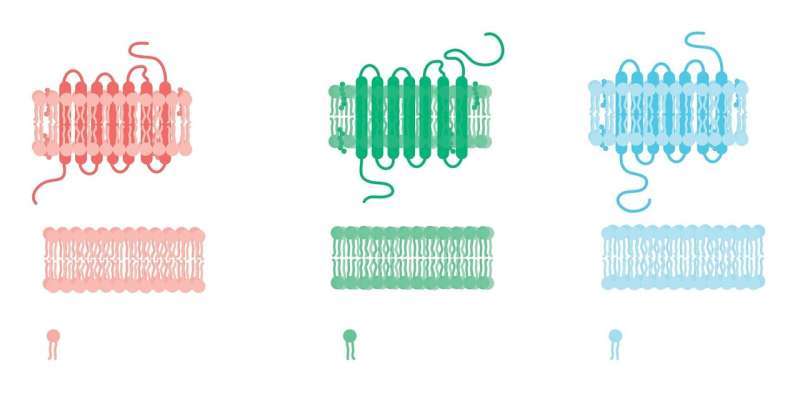How an enriched environment fires up our synapses

Processing of sensory impressions and information depends very much on how the synapses in our brain work. A team around chemist Robert Ahrends from the University of Vienna and neuroscientist Michael R. Kreutz from Leibniz Institute for Neurobiology in Magdeburg now showed how lipid and protein regulation impact brain's processing of a beautiful and stimulating environment. The lipids located in the membranes of the synapses are central to signal transmission, the researchers report in Cell Reports.
"We usually enjoy a beautiful environment, socializing, a cozy apartment, good restaurants, a park—all this inspires us," says Robert Ahrends from the Institute of Analytical Chemistry of the University of Vienna and former group leader at ISAS in Dortmund. Previous studies have already shown that such an enriched environment can sometimes have a positive effect on child development or even on the human ability to regenerate, e.g. after a stroke, however the reason for these observations "was not yet clarified at the molecular level".
Stimulating sensory perceptions are ultimately formed via the activity or regulation of synapses, i.e. those connecting units between our neurons that transfer information from one nerve cell to another. To clarify the underlying molecular principles, the researchers offered the rodents, their model organisms, an enriched environment based on plenty of room to move, a running wheel and other toys. With the help of post-genomic analysis strategies (multiomics) and using state-of-the-art mass spectrometry and microscopy as well as bioinformatics for data analysis, they investigated the regulation of synapses in the hippocampus of the rodents, more precisely the interaction of the proteins and especially lipids (fats) located in the synaptic membranes.
Synapses as central sites of signal transmission
"80 percent of the brain cells are only supporting cells. We have therefore focused on the synapses as central sites of signal transmission and isolated them," says neuroscientist Michael Kreutz. The team gathered quantitative and qualitative information about the network of molecules regulated at synapses and examined their lipid metabolism, also under the influence of an enriched environment. The analyses revealed that 178 proteins and 20 lipids were significantly regulated depending on whether the rodents had spent time in an enriched environment or an uncomfortable one.
Molecular explanation for positive effects
The regulations were characterized by specific lipids as well as proteins of the organisms' endocannabinoid metabolism, which was particularly strongly influenced by the sensory impressions of an enriched environment.
If the information arrives at the synapse as a signal, signal processing is enhanced, which ultimately leads to improved learning and development. In this context, the complex networks of lipids and proteins had a decisive effect on the functioning of the synapses. Thus, the current study provides a molecular explanation for why an enhancing stimulating environment can have a positive effect on neuronal plasticity and brain development.
More information: Maximilian Borgmeyer et al, Multiomics of synaptic junctions reveals altered lipid metabolism and signaling following environmental enrichment, Cell Reports (2021). DOI: 10.1016/j.celrep.2021.109797


















